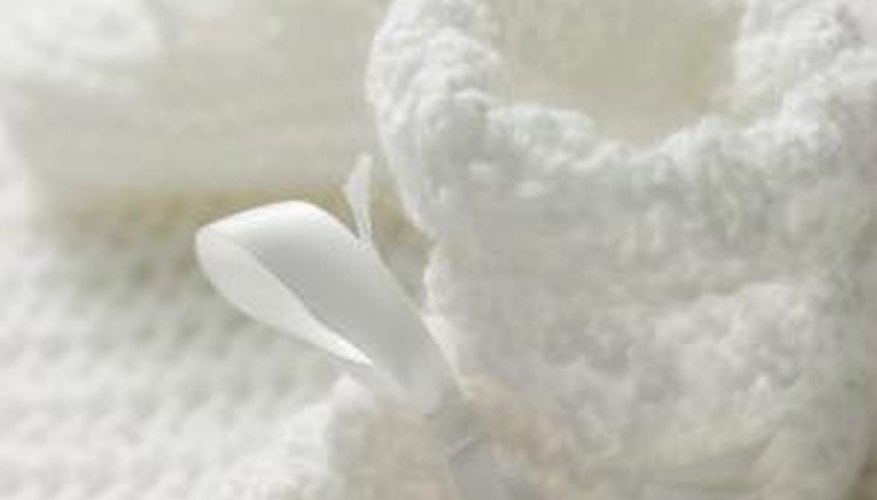Most fabrics, including wool, tend to yellow over time as a natural process of ageing and exposure to light, air, body oils and dirt takes effect. Even the products used to clean and bleach wool can contribute to this yellowing. So what to do to rescue that favourite wool sweater or heirloom hand-knitted infant bootees to make them look fresh and new again? One of the gentlest means of washing wool in order to remove the yellowed appearance is to use white vinegar. Not only is it gentle, but white vinegar is safe, inexpensive and effective. In addition to what to use to remove yellowing, it is important to note how to wash wool. Wool has a tendency to shrink and mat together when it experiences agitation and drying by hot air. So hand wash if possible or use the gentle cycle on the washer if it cannot be hand washed. And let it air-dry.
- Most fabrics, including wool, tend to yellow over time as a natural process of ageing and exposure to light, air, body oils and dirt takes effect.
- One of the gentlest means of washing wool in order to remove the yellowed appearance is to use white vinegar.
Mix one part white vinegar to 12 parts water.
Place the wool into the water, press it down into the water and let the water soak in. Move gently if needed, but avoid strong agitation to prevent the fibres from matting together or stretching. Let it soak for twenty minutes.
- Mix one part white vinegar to 12 parts water.
- Place the wool into the water, press it down into the water and let the water soak in.
Rinse thoroughly to remove the vinegar.
Drain the water from the wool item as best you can. Gently lay the item onto a towel and roll it up, pressing to remove moisture. Unroll the towel and blot the item.
Place a dry towel on a flat surface and lay the item on it to dry. Block or shape the wool item to its original shape. Let it dry overnight. Turn it over and let the other side dry. Drying time will vary depending on humidity, temperature and the thickness of the wool.
WARNING
Bleach, over time, not only can contribute to the yellowing of wool, it also can break down the fibres of the wool, making them weaker and damage the wool. So it should be avoided. Alkaline products, such as soap, can contribute to yellowing and felting of wool. Detergents are less alkaline, so opt to wash your wools with them instead. Natural detergents are available if desired.
